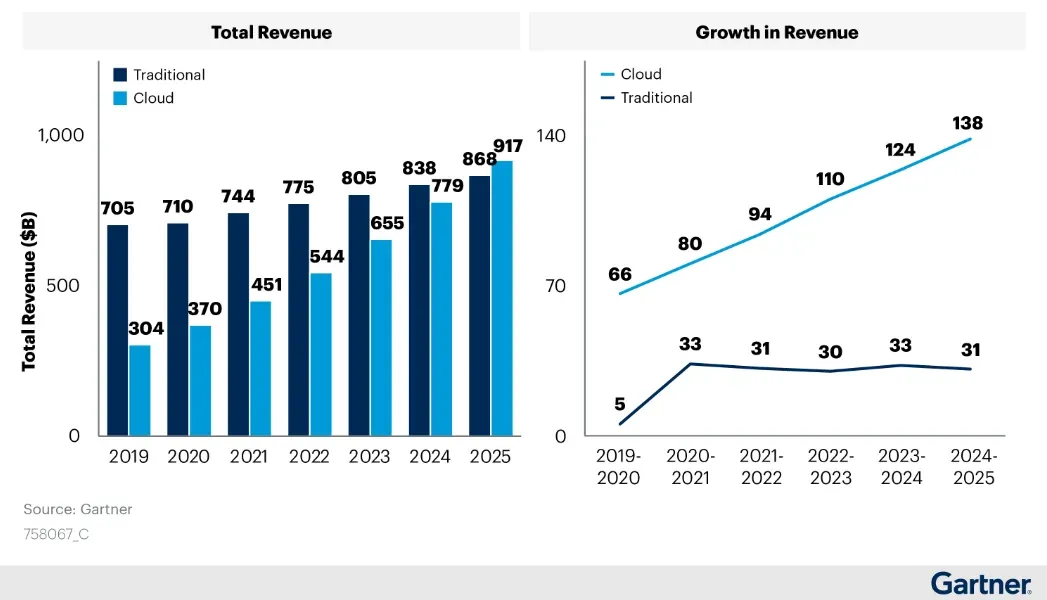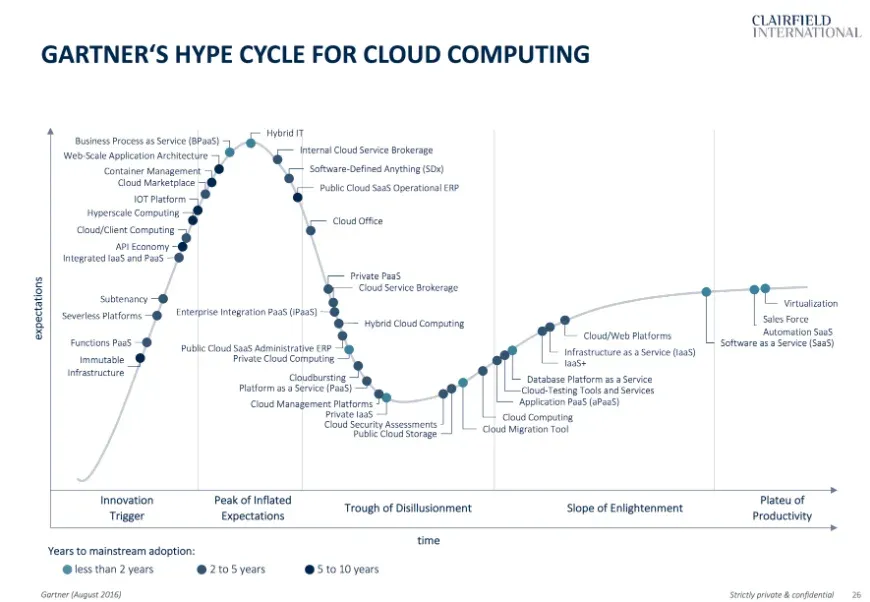As of January 2025, cloud computing continues to be a pivotal force in the technological landscape, driving innovation and shaping business strategies. Gartner's recent reports provide valuable insights into the current state and future trajectory of cloud computing.
Projected Growth in Cloud Spending
- Gartner forecasts that worldwide end-user spending on public cloud services will reach $723.4 billion in 2025.
- This represents a 21.5% increase from $595.7 billion in 2024.

This surge is attributed to the escalating adoption of cloud-based applications and infrastructure, as organizations seek scalable and flexible solutions to meet evolving business demands.
Adoption of Hybrid Cloud Strategies
The trend towards hybrid cloud deployments is gaining momentum. Gartner predicts that by 2027, 90% of organizations will have adopted hybrid cloud strategies. This approach allows businesses to leverage the benefits of both public and private clouds, optimizing performance, security, and cost-efficiency.
The integration of artificial intelligence (AI) into business operations is significantly influencing cloud adoption.
AI technologies require substantial computational resources, which cloud platforms are well-equipped to provide.
This synergy is accelerating the role of cloud computing in supporting advanced analytics and decision-making processes.
Growth in Cloud Infrastructure and Platform Services

- Organizations are increasingly attracted to the efficiencies offered by Cloud Infrastructure and Platform Services (CIPS).
- Gartner defines CIPS as a full-featured platform where Infrastructure-as-a-Service (IaaS) and Platform-as-a-Service (PaaS) capabilities are delivered as integrated cloud services.
- Spending on CIPS is projected to grow by 24.2% in 2025, reaching $301 billion.
Gartner's 2025 reports underscore the critical role of cloud computing in driving business innovation and operational efficiency.
As organizations navigate the complexities of digital transformation, strategic investments in cloud technologies will be essential to remain competitive in the evolving market landscape.







